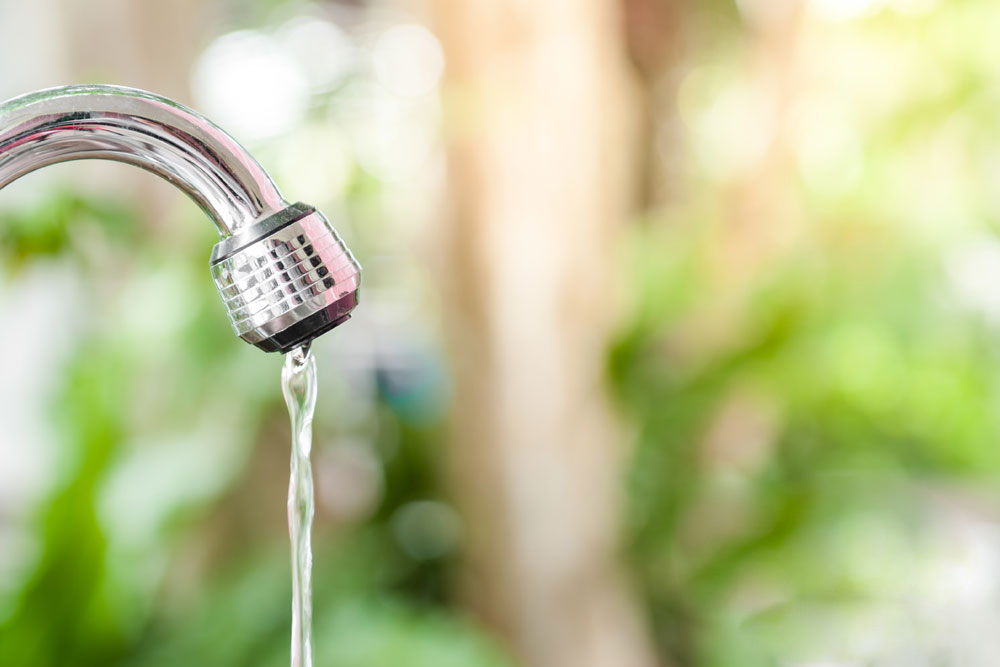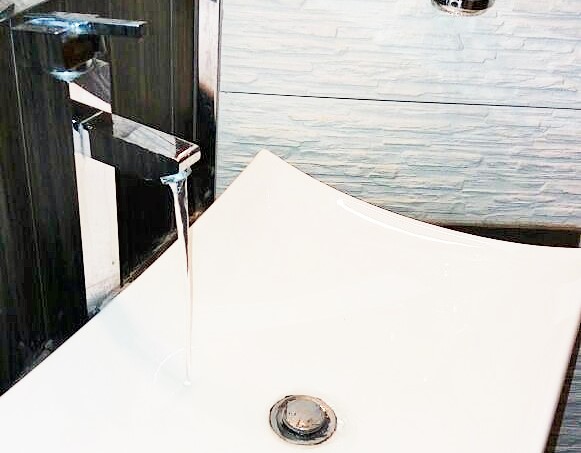Step-by-Step Techniques for Resolving Low Water Pressure in Your Home
Step-by-Step Techniques for Resolving Low Water Pressure in Your Home
Blog Article
The article below on the subject of Dealing with Low Water Pressure in Your Home is pretty much insightful. Have a go and draw your own personal findings.

Low water stress in your home can be a frustrating trouble, influencing every little thing from showering to cleaning recipes. If you're experiencing weak water circulation, there are numerous feasible reasons and remedies to explore. In this guide, we'll talk about common factors for low water pressure and sensible actions to deal with the concern effectively.
Introduction to Low Tide Pressure
Low water pressure happens when the flow of water from your faucets, showers, and various other components is weaker than common. This can make day-to-day tasks much more challenging and much less effective. Comprehending the reasons for low water pressure is essential to locating the right option.
Typical Root Causes Of Low Tide Stress
Faulty Pressure Regulatory Authorities
Stress regulators are accountable for preserving consistent water stress in your house. If they malfunction, it can result in low water stress or uneven flow throughout the house.
Community Water Issues
In some cases, the problem lies outside your home. Municipal water supply concerns, such as main line leakages or upkeep work, can briefly decrease water pressure in your area.
Pipeline Obstructions
Over time, pipelines can become obstructed with natural resource, sediment, or particles, limiting the circulation of water. This is an usual concern in older homes with galvanized steel pipelines.
Corrosion
Rust within pipelines can bring about leakages and decreased water pressure. Corrosion build-up can constrict water circulation, particularly in aging plumbing systems.
Just How to Diagnose Low Tide Stress
Checking Pipelines
Evaluate noticeable pipelines for indicators of leakages, rust, or clogs. Take note of any uncommon noises, such as knocking or rattling pipelines, which can indicate concerns within the plumbing system.
Consulting with a Plumber
If you're unable to pinpoint the cause of low tide stress, take into consideration hiring a specialist plumber to conduct an extensive assessment. They can recognize underlying concerns and suggest suitable services.
Checking Faucets and Fixtures
Start by checking the water stress at different taps and components throughout your home. If the issue is isolated to particular areas, it might suggest local problems.
Do It Yourself Solutions to Fix Low Tide Pressure
Flushing Hot Water Heater
Sediment build-up in the hot water heater can restrict circulation and reduce performance. Flushing the container occasionally aids get rid of debris and keep optimum performance.
Inspecting Pressure Regulatory Authority
Guarantee that the stress regulatory authority is operating correctly. Adjusting or changing the regulatory authority can aid recover proper water pressure throughout your home.
Cleaning Up Aerators and Showerheads
Natural resources can collect in aerators and showerheads, lowering water circulation. Remove and cleanse these parts on a regular basis to enhance water pressure.
Clearing Clogs in Pipeline
For minor blockages, try utilizing a plumbing serpent or chemical drain cleaner to clear obstructions in pipelines. Beware when using chemicals and adhere to safety and security guidelines.
When to Call an Expert Plumber
If DIY efforts fail to resolve the concern or if you suspect considerable plumbing problems, it's finest to look for support from a licensed plumber. They have the competence and devices to address intricate concerns securely and properly.
Safety Nets to Preserve Water Stress
Mounting a Pressure Booster
Consider setting up a stress booster pump to boost water pressure in areas with regularly low flow. This can be especially beneficial for multi-story homes or residential or commercial properties with high-demand components.
Tracking Water Usage
Be mindful of water use routines and avoid overtaxing the plumbing system. Simple modifications, such as shocking showers and washing tons, can help keep adequate water pressure.
Normal Maintenance
Set up routine upkeep for your plumbing system to avoid problems such as corrosion, leaks, and clogs. Addressing minor issues early can assist stay clear of more significant repair services later.
Final thought
Taking care of low water stress can be frustrating, yet identifying the underlying causes and applying appropriate options can bring back ideal flow throughout your home. Whether it's cleaning aerators, checking pipes, or consulting with a plumber, taking proactive steps can make certain a consistent supply of water for your everyday demands.
9 Solutions to Low Water Pressure
If you have ever struggled to rinse the shampoo out of your hair, washed your hands under a trickle of water, or been forced to wait for your washing machine to complete a cycle, then you have experienced the nuisance of low water pressure. Low water pressure can turn a simple task into a hassle, but once you identify the cause, either the necessary plumbing fix or a water booster pump can drastically improve your water pressure. In this article, you can learn about nine common causes of low water pressure and how to resolve low water pressure in your home.
How do you know if you have low water pressure?
Testing your home’s water with a pressure gauge is the easiest way to find out if you have low water pressure. Pressure gauges are simple and inexpensive, and once installed, will allow you to check your water pressure with a quick glance.
If your water is from a municipal water supply, select an outdoor faucet near where the main water line enters your home. If your water is from a well, select a faucet that is close to the well’s pressure tank. Attach the pressure gauge to the faucet and tighten it. To get an accurate reading, make sure water isn’t being used anywhere else inside or outside the house, and then fully turn the faucet on. Once the faucet is on, you can read the water pressure on the gauge’s dial. Typical home water pressure should be between 40 and 50 psi, so if the dial reads less than 40 psi, you have low water pressure.
Do water booster pumps increase water pressure?
A water booster pump is a centrifugal pump that improves low water pressure and increases water flow. Much like how a fan’s blades create a gust of air, a water booster pump’s rotating impeller draws water in and then pushes it out with increased force. This force raises the water pressure in a system. A water booster pump is installed where the main water line enters your home, so water pressure is improved in every tap and appliance.
What causes low water pressure?
1. Hard water
If you have hard water, scale can accumulate in your pipes, restrict the water flow, and reduce your water pressure. Hard water has a high mineral content, specifically calcium and magnesium, and scale is formed when these mineral salts dissolve.
The solution: When scale buildup is severe enough to restrict water flow and reduce water pressure, the best solution is to replace your pipes. Products like CLR Calcium, Lime, and Rust remover can diminish scale, but as the scale comes off it may clog your pipes, creating another costly plumbing problem. Not to mention, it is never a good idea to put harsh chemicals in the pipes that supply your drinking water. To prevent scale in the future, we recommend installing a water softener.
The main water shut off valve is not open.
If your water pressure has suddenly decreased and you recently had a repair done, make sure the main water shut off valve is fully open. Most plumbing repairs require the water to be shut off, but if the valve is not completely opened afterward, your water pressure will be restricted.
The solution: Locate your main shut off valve, which is installed where the main water line enters your home, and fully open it by turning it counterclockwise.
A municipal water problem
Low water pressure may not have to do with your own plumbing system. Just like your home’s water supply, the municipal water supply is subject to problems that can cause low water pressure, such as leaks and corrosion.
The solution: Call the municipal water supply to report your low water pressure. Your input may alert them to the problem and will ensure your water pressure is restored as quickly as possible.
Faulty pressure regulator
A pressure regulator is a valve that reduces incoming water pressure as water flows into your home from the main service line. High water pressure can damage pipes and plumbing fixtures, so a pressure regulator is installed to protect your home plumbing system. Most are set to 50 pounds per square inch (psi), but if yours is set lower, your water pressure will feel low. If your pressure regulator is set to 50 psi but your pressure still feels low, it may be broken or clogged.
The solution: Adjust your pressure regulator’s setting to 50 psi if it is currently set lower. If your pressure regulator is faulty, ask a plumber to replace it.
A leak
A leak can reduce water flow and water pressure. To determine if you have a leak, turn all the faucets off inside and outside of your home. About an hour later, check your water meter. If it indicates you are using water, you have a leak.
The solution: Enlist the help of a licensed plumber to locate and repair the leak. Once the repairs are complete, your water pressure should return to normal.
https://www.freshwatersystems.com/blogs/blog/what-causes-low-water-pressure-and-how-to-improve-it

As a serious person who reads about 4 Ways to Troubleshoot Low Water Pressure, I think sharing that excerpt was a good idea. Kindly take a moment to share this post if you enjoyed it. Thank you for your time invested reading it.
Click Here Report this page